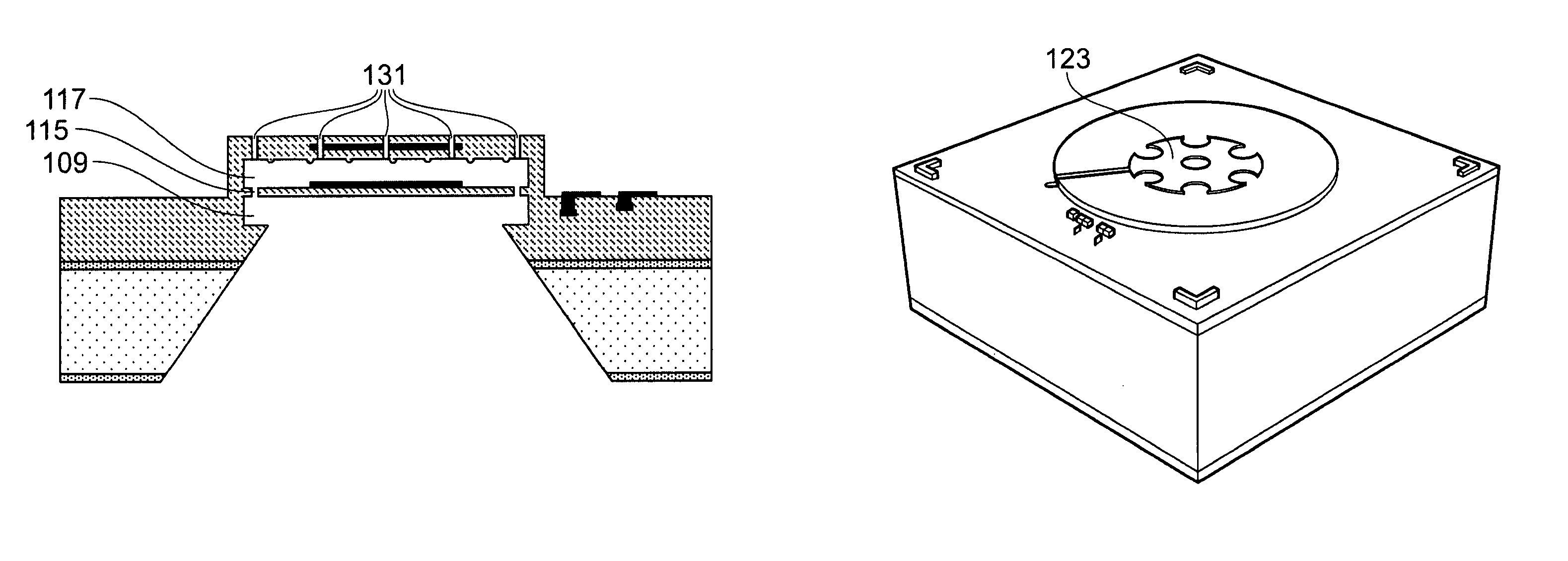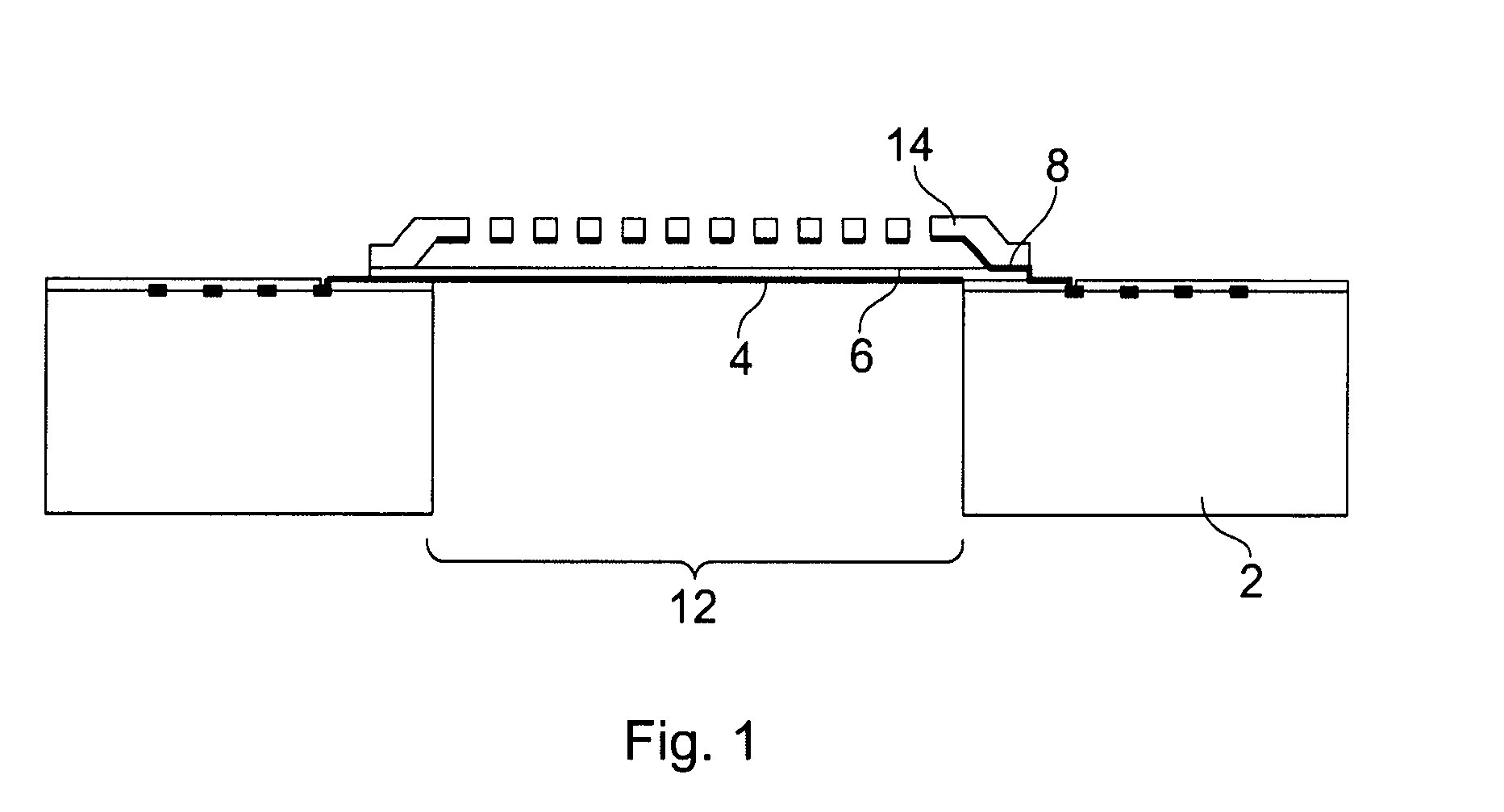MEMS process and device
a technology of electromagnetic field and process, applied in the direction of loudspeaker diaphragm shape, semiconductor/solid-state device testing/measurement, instruments, etc., can solve the problems of interference, noise, parasitic capacitance and inductance, and difficulty in achieving compatibility with standard processes used to fabricate complementary metal-oxide-semiconductor (cmos) electronic devices
- Summary
- Abstract
- Description
- Claims
- Application Information
AI Technical Summary
Benefits of technology
Problems solved by technology
Method used
Image
Examples
Embodiment Construction
[0027]FIGS. 2 and 3 show a schematic diagram and a perspective view, respectively, of a capacitive microphone device according to the present invention. The capacitive microphone device comprises a flexible membrane 11 that is free to move in response to pressure differences generated by sound waves. A first electrode 13 is mechanically coupled to the flexible membrane 11, and together they form a first capacitive plate of the capacitive microphone device. A second electrode 23 is mechanically coupled to a generally rigid structural layer or back-plate 14, which together form a second capacitive plate of the capacitive microphone device.
[0028]The capacitive microphone is formed on a substrate 1, for example a silicon wafer. A back-volume 33 is provided below the membrane 11, and is formed using a “back-etch” through the substrate 1, as will be described in greater detail later in the application. A first cavity 9 is located directly below the membrane 11. The first cavity 9 is forme...
PUM
 Login to View More
Login to View More Abstract
Description
Claims
Application Information
 Login to View More
Login to View More - R&D
- Intellectual Property
- Life Sciences
- Materials
- Tech Scout
- Unparalleled Data Quality
- Higher Quality Content
- 60% Fewer Hallucinations
Browse by: Latest US Patents, China's latest patents, Technical Efficacy Thesaurus, Application Domain, Technology Topic, Popular Technical Reports.
© 2025 PatSnap. All rights reserved.Legal|Privacy policy|Modern Slavery Act Transparency Statement|Sitemap|About US| Contact US: help@patsnap.com



